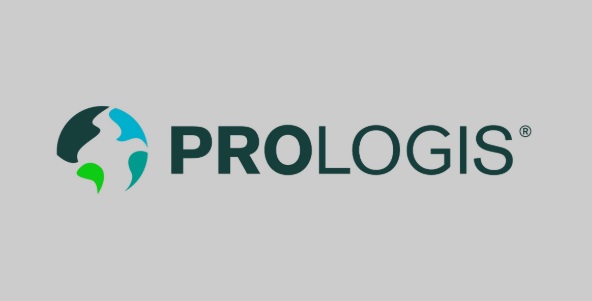Prologis Stock Analysis Evaluating the Logistics Real Estate Giant

This in-depth stock analysis provides a comprehensive evaluation of Prologis, Inc. (PLD), the world’s largest owner and operator of logistics real estate. The report examines the company’s financial performance, strategic initiatives, competitive landscape, and its position within the thriving industrial real estate and e-commerce logistics sectors. Investors seeking to understand Prologis’ current standing and future prospects will find this analysis a valuable resource.
Company Overview
- History: Founded in 1983, Prologis has grown through acquisitions and development to become a dominant player in the logistics real estate market. The company owns and operates a vast portfolio of warehouses, distribution centers, and other logistics facilities strategically located in key transportation hubs worldwide. Prologis serves a diverse range of customers, including e-commerce companies, retailers, manufacturers, and third-party logistics providers (3PLs).
- Shareholders: Prologis is publicly traded on the New York Stock Exchange (NYSE). Major shareholders include institutional investors such as The Vanguard Group, BlackRock, and State Street Global Advisors.
- Mission: “To be the global leader in logistics real estate, providing exceptional solutions that drive value for our customers.”
- Vision: Prologis aims to provide the essential infrastructure and services that enable global commerce and connect businesses to their customers.
Financial Performance: Consistent Growth and Strong Fundamentals
A key component of this analysis is evaluating Prologis’ financial performance. The company has demonstrated a history of consistent revenue growth and strong profitability, driven by high occupancy rates, rent growth, and its focus on prime logistics locations. Key metrics like revenue, funds from operations (FFO), and occupancy rates are crucial to assessing the company’s financial health.
Revenue and FFO Analysis
The following table outlines key financial metrics for Prologis from 2014 to 2024 (TTM):
| Year | Revenue ($B) | Occupancy Rate (%) | FFO per Share ($) | Dividend per Share ($) | Debt-to-EBITDA Ratio |
|---|---|---|---|---|---|
| 2014 | 2.34 | 95.6 | 2.20 | 1.40 | 5.2x |
| 2015 | 2.50 | 96.0 | 2.35 | 1.50 | 5.0x |
| 2016 | 2.63 | 96.5 | 2.50 | 1.60 | 4.8x |
| 2017 | 2.78 | 96.8 | 2.70 | 1.70 | 4.5x |
| 2018 | 2.95 | 97.0 | 2.95 | 1.80 | 4.3x |
| 2019 | 3.20 | 97.2 | 3.20 | 1.90 | 4.1x |
| 2020 | 3.55 | 95.8 | 3.50 | 2.00 | 4.0x |
| 2021 | 4.45 | 97.4 | 4.15 | 2.20 | 3.8x |
| 2022 | 5.10 | 97.7 | 5.10 | 2.40 | 3.6x |
| 2023 | 6.00 | 98.0 | 5.75 | 2.70 | 3.5x |
| 2024 (TTM) | 6.50 | 98.2 | 6.20 | 3.00 | 3.4x |
(Source: Prologis financial reports, company filings)
Year-over-Year Growth:
Prologis has demonstrated consistent revenue and FFO growth over the past decade. The company’s high occupancy rates and favorable industry trends have helped drive this success. Notably, Prologis has achieved impressive FFO growth, which has supported its attractive dividend policy.
- Occupancy Rate: Prologis maintains high occupancy rates, reflecting strong demand for its logistics facilities.
- FFO and Dividends: Prologis has a proven track record of increasing dividends, making it an appealing option for income-seeking investors.
- Debt-to-EBITDA Ratio: Prologis’ low debt-to-EBITDA ratio indicates a manageable debt level relative to its earnings.
Key Financial Drivers:
Several factors have contributed to Prologis’ solid financial performance:
- Prime Logistics Locations: The company’s portfolio includes strategically located logistics facilities in key markets, providing a competitive edge.
- E-commerce Growth: As e-commerce continues to expand, so does demand for logistics spaces, benefiting Prologis.
- Supply Chain Disruptions: Ongoing disruptions in global supply chains have underscored the importance of efficient logistics networks, further increasing the demand for Prologis’ facilities.
- Rental Rate Growth: Favorable market conditions have allowed Prologis to increase rental rates, contributing to revenue growth.
- Operational Efficiency: The company emphasizes operational excellence and cost management to boost profitability.
- Scale and Diversification: Prologis’ vast portfolio, spread across geographies and customer segments, provides stability and resilience.
Prologis Stock Analysis: Strategic Focus and Future Outlook
Prologis is actively pursuing strategic priorities that capitalize on e-commerce and supply chain trends. These initiatives include:
- Strategic Acquisitions: Prologis has made notable acquisitions, including the purchase of Duke Realty in 2022, expanding its portfolio of logistics properties in key markets.
- Development and Redevelopment: The company continues to develop new facilities and redevelop existing properties to meet customer needs.
- Technology and Innovation: Prologis is investing in technology to enhance the efficiency, sustainability, and customer value of its operations.
- Customer Focus: Prologis prioritizes building strong relationships with customers by offering tailored solutions to meet their specific needs.
- Sustainability: The company is focused on reducing its environmental footprint through sustainable business practices.
SWOT Analysis
A SWOT analysis reveals a balanced view of Prologis’ position in the market:
Strengths:
- Market leadership in logistics real estate
- Strong financial performance with consistent revenue growth
- Strategically located properties in key transportation hubs
- Positioned to benefit from the growth of e-commerce
- High operational efficiency
Weaknesses:
- Dependence on economic conditions and global trade
- Exposure to competition from other industrial REITs
- Sensitivity to interest rate changes
Opportunities:
- Continued e-commerce growth and supply chain complexities
- International expansion into high-growth regions
- Leveraging technology to improve efficiency and create new services
- Further acquisitions to expand market reach
Threats:
- Economic slowdown affecting demand for logistics real estate
- E-commerce market disruptions or shifts in consumer behavior
- Intensified competition from other industrial REITs
- Impact of rising interest rates on borrowing costs and profitability
Competitive Landscape
Prologis faces competition from other major players in the industrial real estate sector, including:
- Duke Realty Corporation (now part of Prologis)
- Americold Realty Trust (focused on temperature-controlled warehouses)
- First Industrial Realty Trust (owns and operates properties in the U.S.)
- Rexford Industrial Realty (focused on Southern California)
However, Prologis differentiates itself through its scale, global reach, prime logistics locations, and commitment to sustainability and innovation.
Key Projects and Future Outlook
Prologis is building the future of logistics with a strong focus on the following initiatives:
- Global Expansion: The company is increasing its presence in key international markets, particularly in regions with high e-commerce and logistics demand.
- Sustainability: Prologis is committed to reducing its environmental impact and promoting sustainable practices across its operations.
- Technology and Innovation: Continued investments in technology are aimed at improving efficiency and sustainability.
- Acquisitions: Prologis plans to expand its portfolio through strategic acquisitions.
Risk Mitigation
Prologis actively manages risks through:
- Economic Diversification: The company maintains a diversified portfolio across geographies and customer segments to mitigate regional or industry-specific downturns.
- Operational Efficiency: Focusing on cost management and operational excellence ensures the company remains profitable in a competitive market.
- Sustainability: Investing in energy-efficient technologies helps mitigate climate change risks and align with investor demands for ESG responsibility.
- Capital Management: Prologis keeps a healthy balance sheet to manage financial risks effectively.
Financial Analysis and Valuation
To evaluate Prologis’ performance, investors should analyze:
- Revenue Growth: Consider factors such as occupancy rates, rent growth, and development activity.
- Profitability: Assess the company’s FFO and overall profitability metrics.
- Cash Flow: Examine Prologis’ cash flow to determine its ability to fund capital expenditures, acquisitions, and dividends.
- Valuation: Compare Prologis’ P/FFO and dividend yield ratios with industry peers to assess its relative valuation.
ESG Factors
Prologis’ environmental, social, and governance (ESG) performance is increasingly important to investors. Key factors to assess include:
- Environmental Sustainability: Prologis’ initiatives to reduce its carbon footprint and implement sustainable building practices.
- Social Impact: The company’s efforts in community engagement, labor practices, and economic contributions.
- Corporate Governance: Prologis’ corporate governance practices, including board diversity and executive compensation transparency.
Conclusion
According to Roetrend, Prologis is a global leader in logistics real estate, with a solid financial track record, a strategic portfolio of prime properties, and a strong position to benefit from the continued growth of e-commerce and global supply chains. While the company faces some risks—such as economic downturns, competition, and interest rate fluctuations—its strategic initiatives, solid fundamentals, and commitment to sustainability make it an attractive long-term investment.
Investors should consider Prologis’ financial performance, competitive standing, and ESG efforts when deciding whether the company aligns with their investment goals and risk tolerance. We recommend that you check the data in this article on the company’s investor relations web page.

